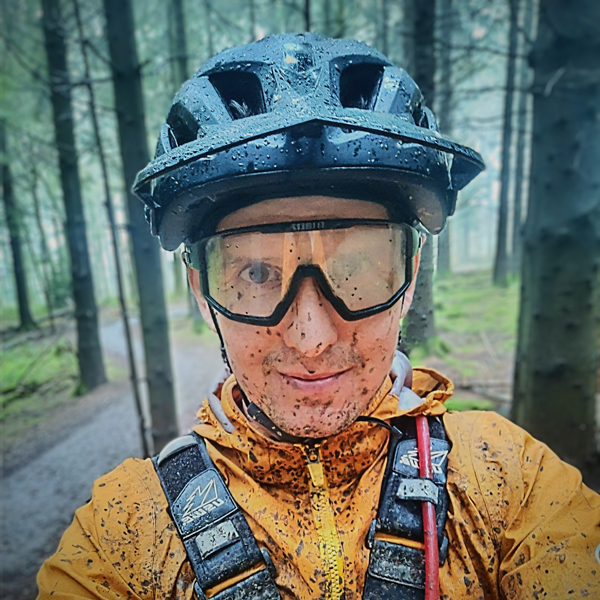The Formula Selva R is the brand's top-of-line single-crown enduro, all-mountain suspension fork.
The 35mm stanchions may seem a little outdated compared to other brands' more burly long-travel forks, but the Selva R spans a broad travel spectrum, ranging from 120mm to 170mm for the 29in wheel version.
There are chassis sizes for 29/27.5in+ wheels. The forks use an air spring with independently filled positive and negative air chambers.
There is externally adjustable high- and low-speed compression damping and low-speed rebound damping. Furthermore, there is a lock-out lever and swappable compression-damping shim stacks to fine-tune the feel of the fork to your preference.
You can increase progression with Formula's Neopos volume spacer. This is undoubtedly the most user-tunable fork on the market.
The Selva R retails for £1,199.99, and in the 170mm-travel, 29in-wheel version, with a 43mm offset, my review sample weighed 2.11kg.
Formula Selva R specification and details
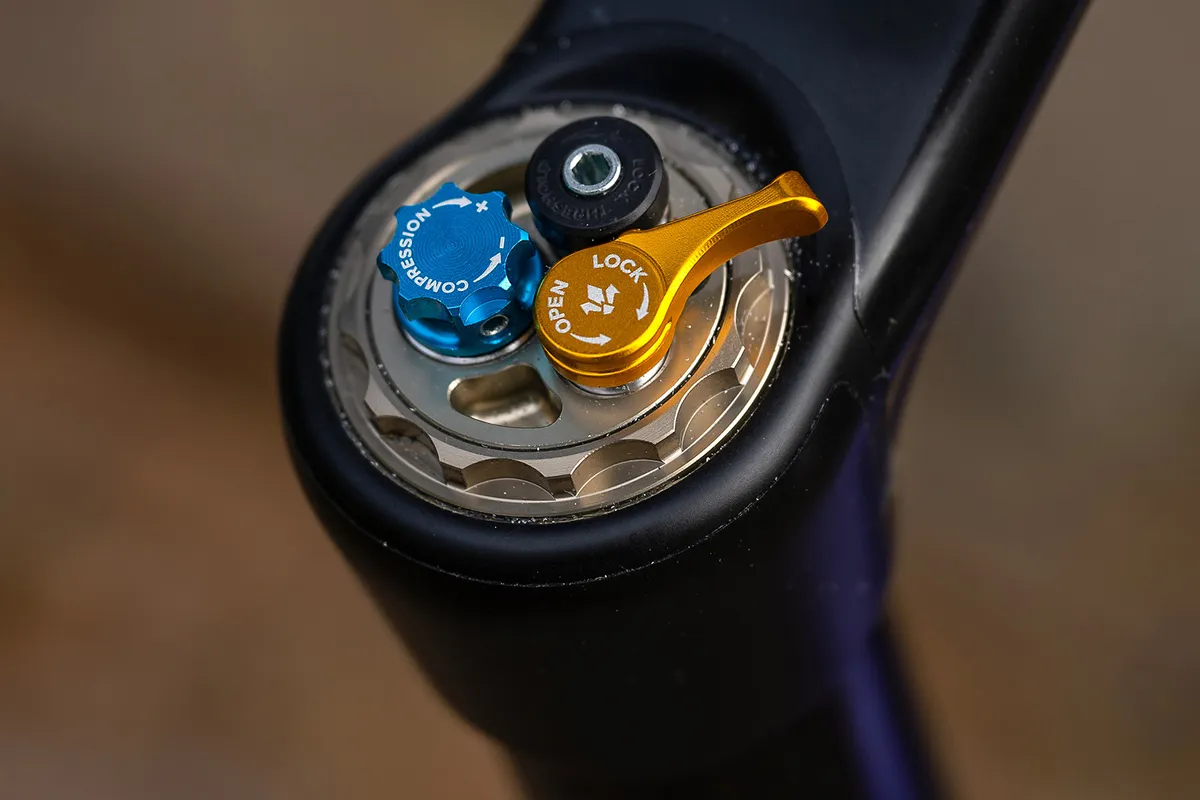
A lot is going on with the Selva R, and the customisation you can perform will be relished by those who love to tinker.
Starting with the spring, Formula uses what it calls 2Air, where the positive and negative air chambers are filled independently. This enables you to set the support for your riding style and weight with the positive spring.
You can then fine-tune the suppleness of the initial travel with the negative spring.
Most brands, such as RockShox and Fox, use self-equalising positive and negative spring chambers. The Selva R enables you to run higher pressures in the negative chamber for a more supple initial part of the travel.
New positive
Fork progression is controlled by Formula's Neopos 'New Positive' volume spacers. These are different from the usual plastic blocks that click or thread together.
Instead, Neopos are made from a closed-cell foam that squashes as the suspension compresses due to increased air pressure in the positive air chamber.
Formula claims this has several benefits over regular volume spacers.
First, Formula states that due to the compression of the Neopos, you get a more linear ramp-up that offers better mid-stroke support but doesn't have the abrupt increase in pressure at the end of the travel that rarely gets used with traditional spacers.
Also, the support is compression-speed sensitive. The Neopos won't have time to shrink during high-speed compressions, so it takes up more space in the positive chamber, increasing progressivity and support.
During low-speed compressions, the Neopos has more time to squash, giving a more linear ramp-up and enabling more travel.
It also influences high-speed rebound. For example, compressions that significantly reduce the Neopos volume have the effect of effectively increasing volume in the positive chamber (compared to if it didn’t squash like a plastic spacer), reducing the pressure and thus the rebound damping needed to control the fork's return.
Formula says all this gives a more predictable and consistent ride feel.
Compression Tuning System
Moving to the damping leg, you get externally adjustable high- and low-speed compression damping. These are changed together through one dial, so you can't alter them individually.
However, Formula has again set itself apart from the competition with its CTS (Compression Tuning System). These are interchangeable compression valves and there are seven to choose from (two supplied with the fork, others sold separately), which modify the fork's behaviour.
Think of it as having seven changeable shim stacks you can install yourself rather than taking your fork to a suspension technician.
At the bottom of the fork is an externally adjustable rebound dial. Plus, the fork has a lock-out lever with its own threshold adjuster, so you can set it completely locked out or so there's still some travel when turned on.
Slender silhouette
The Selva R's 35mm stanchions are slim compared to most modern long-travel single-crown forks. Still, the magnesium lowers feature Formula's HEX. This is a hexagonal design feature on the lower, a noticeable swell in thickness that's intended to balance flex and stiffness.
There is an aluminium hollow-forged crown and Boost hub spacing with a quick-release bolt-thru 15mm axle. One oddity is the 160mm brake mount.
Formula Selva R performance
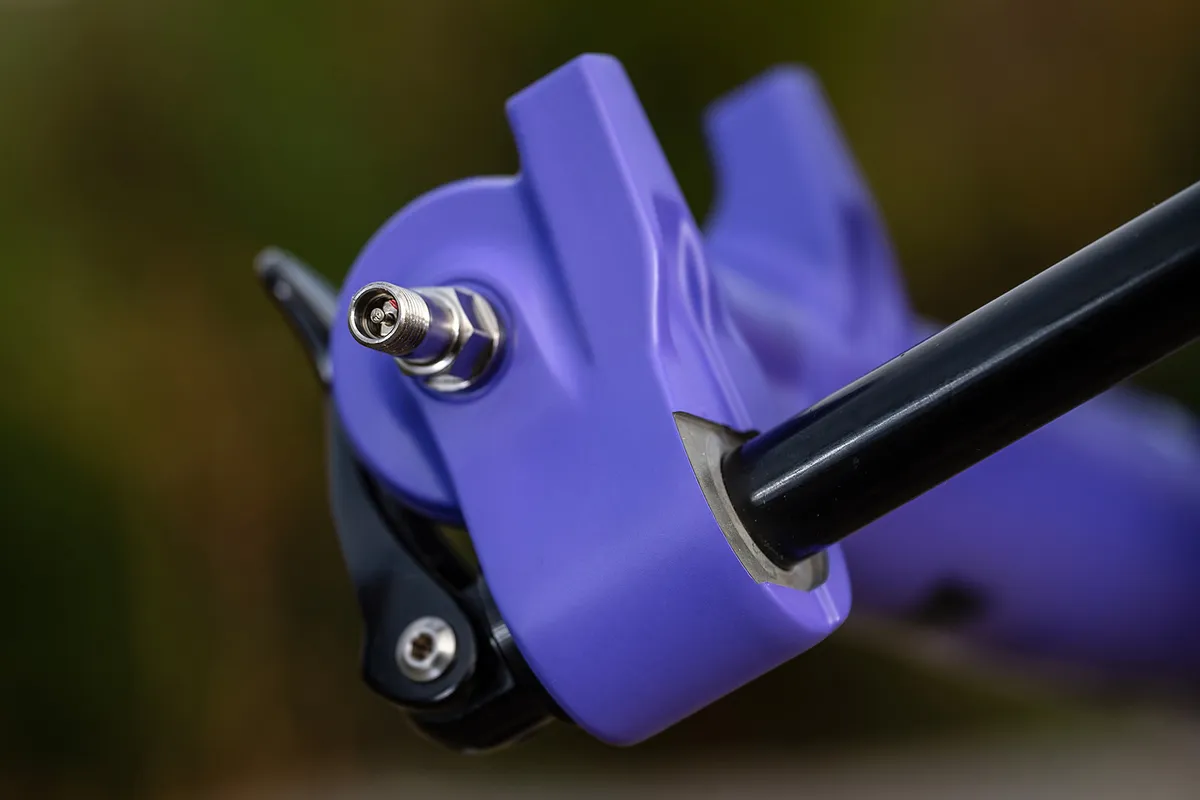
For my 76kg weight, I ran 76psi in the positive air chamber and 96psi in the negative, close to Formula's recommended settings. This gave me around 20 per cent sag. I set rebound to 15 clicks from closed out of 21, and ran compression damping open, which was my preferred setting to get maximum comfort.
It took a few runs to get the Selva R to a setting I was happy with. When hitting bigger bumps in the trail, initially, I found the mid-stroke too supportive, and there was too much progression. This felt as if I was being beaten up by the trail, and I found it challenging to keep the front wheel where I wanted it.
I removed the Neopos and changed the pre-installed red CTS valve to the blue one, while keeping the same spring rates. This gave the fork more comfort and movement in the mid-stroke, which helped keep the front wheel tracking where I wanted it to go, plus made the ride much for forgiving.
It's not often I find myself singing when riding a bike. However, that's what I was doing with the Selva R on my Evil Insurgent test bike. Things just felt right, and I was having a brilliant time on the trail.
The 2Air system is a helpful for fine-tuning how you like the initial part of the travel to feel. I appreciate grip and comfort, so I ran the Selva R at the higher end of the negative spring pressure to maximise sensitivity.
This gave the fork plenty of small-bump compliance and allowed the suspension to hug the floor, making grip on slippery and unsupported sections of trail easy to find.
With the fork moving happily into the initial part of its travel, trail chatter on small high-frequency bumps was muted well.
With this setting, the suppleness over mid-sized rocks and roots was impressive.
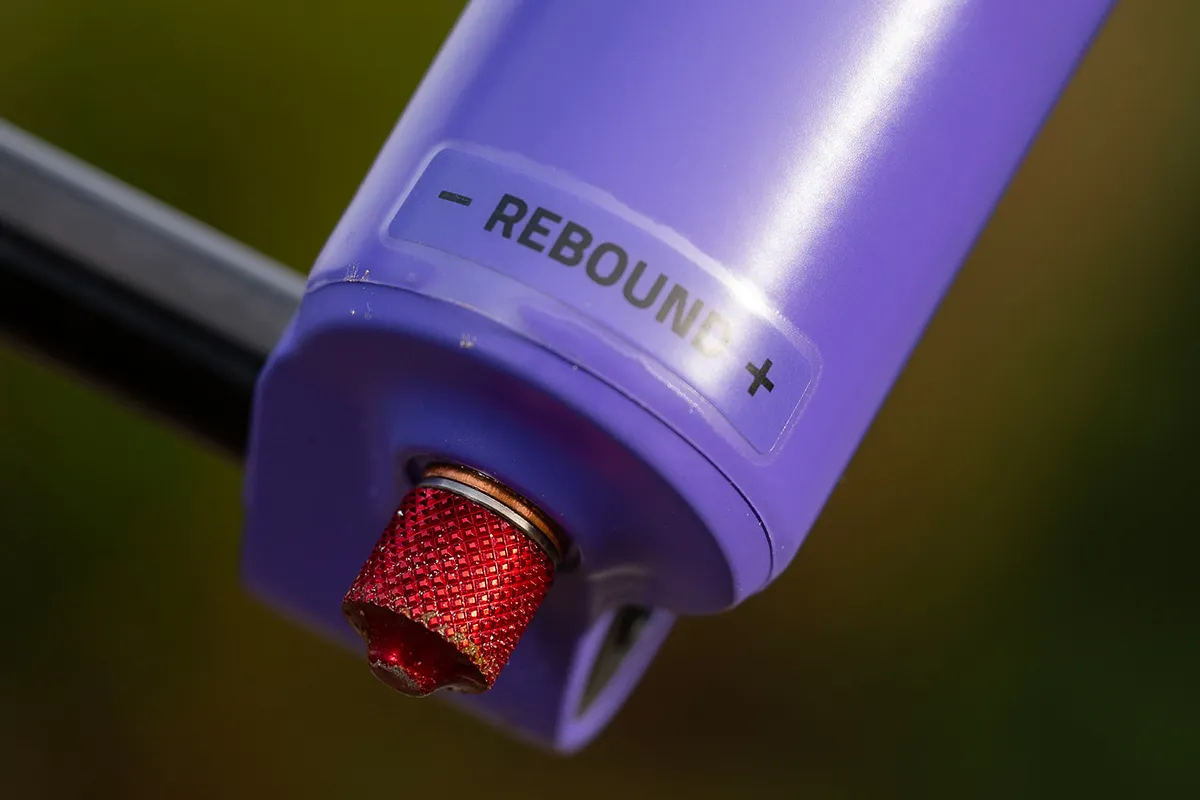
In addition, the Selva R calmed the ride and kept the front end stable. There were no harsh spikes as the fork moved through its travel at fast compression speeds. Hitting braking bumps, the fork's rebound setting was fast enough to keep it from packing down and becoming harsh.
Loading the front end in turns to seek out grip never made the fork dive excessively, and while the fork moved through its travel for high-speed hits, low-speed compression seemed adequate, numbing the ride feel.
Hand fatigue was minimal on continuous rough trails.
Even without the Neopos, the progression was impressive, and I never used full travel.
Hitting deep compressions and ploughing into holes at speed, I was never worried I wouldn't come out the other side in control. The Selva R soaked up harsh hits without flinching or transferring disproportional feedback through the bars.
The Selva R maintains momentum well. Don't let its narrow dimensions put you off, either. The fork handles very well, and I never experienced unnecessary flex or binding that inhibited its performance.
Whether in high-load berms, slow awkward hairpins or big compressions, the Selva kept its composure and didn't get bucked off-line once set up for my liking.
One criticism is the narrow arch made fitting a mudguard more challenging because my Velcro straps were too long to fasten tight enough. Also, the fork's 160mm brake mount seems outdated, even though you can run a maximum 220mm rotor.
How does the Formula Selva R compare to the RockShox ZEB Ultimate Charger 2.1?
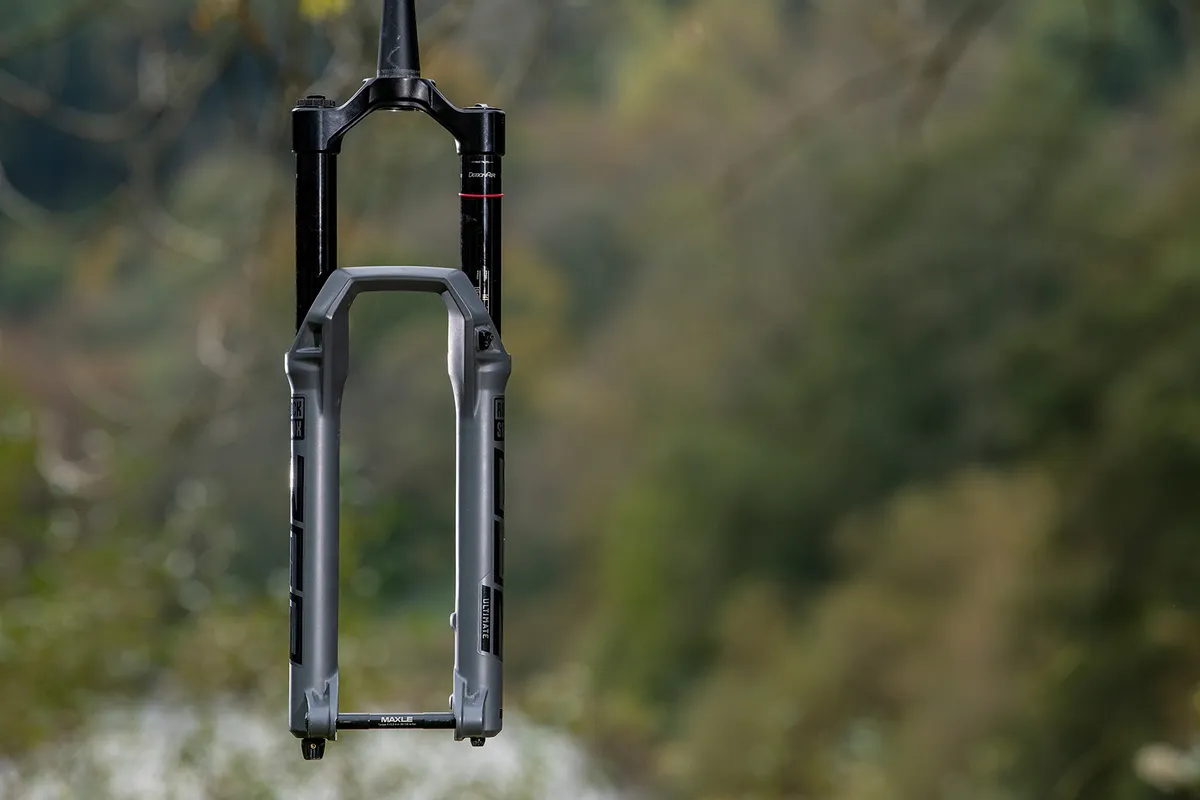
RockShox's now superseded ZEB Ultimate Charger 2.1 fork is still my benchmark for high-end long-travel suspension forks.
How I set the Selva R is unsurprisingly close to the RockShox, because that's my preferred fork. However, with the independently adjustable negative spring pressure, you can make the Selva R more supple in the initial part of the travel. This is impressive, because the ZEB is no slouch there.
Where the RockShox shines is comfort in the mid-stroke, and it's still best in class here. The Formula can use its mid-stroke travel well, but it doesn't have the plushness of the ZEB.
Progression on both is impressive. However, I need to run tokens in the ZEB, but I don't on the Selva R. The Selva R wins hands down for adjustability, tunability and weight, but you have to pay more for this tech.
Formula Selva R bottom line
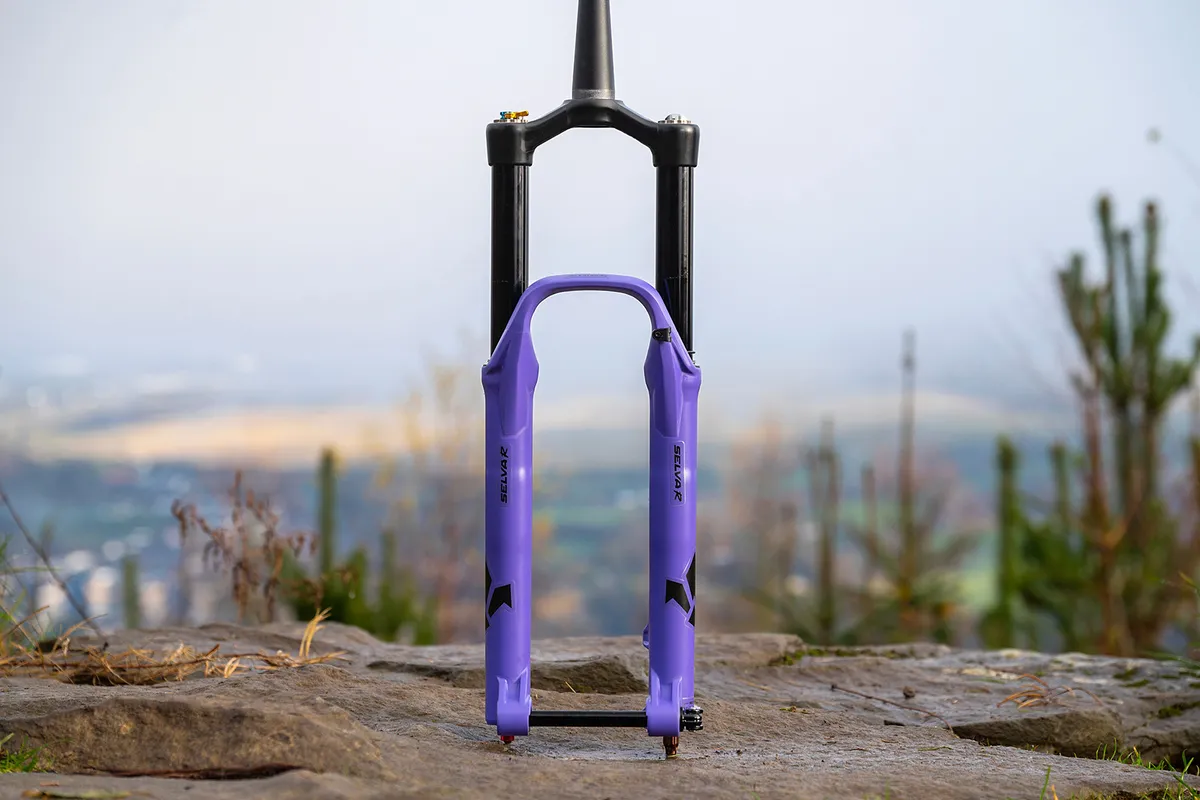
The great thing about the Formula Selva R is you can tune it to your preferred setup within a few minutes. And that's not just compression and rebound speeds, but how the spring and damping behave.
I like light damping and want the spring to provide support. Other riders who like heavy damping can achieve that too. There are plenty of options to work with, and those who enjoy fine-tuning will be able to have their cake and eat it.
On the trail, the fork is smooth and composed. It provided the small-bump sensitivity and mid-stroke comfort I like, with enough progression to keep the fork from sitting too deep in its travel. As a result, I never worried about having to back off when hitting big holes and deep compressions.
The Selva R is plush, smooth and relatively light. It impressed me thoroughly.
How we tested
The best mountain bike suspension forks are a pricey upgrade, but are one of the most important parts of a bike. They influence performance greatly, contributing to handling, comfort and control.
In addition, forks are one of the first big upgrades riders buy, so picking the right one is essential.
We tested seven forks that cover a wide range of price points.
The forks were put through their paces on both the black and rough red trails at BikePark Wales, repeating laps to make testing as consistent as possible.
Forks on test
- Fox 38 Performance Elite review
- DVO ONYX SC D1
- EXT ERA V2
- RockShox ZEB Select review
- Cane Creek Helm MkII
- Manitou Mezza Expert
- Formula Selva R
Product
| Brand | formula |
| Price | 2099.00 AUD,1200.00 GBP |
| Weight | 2110.0000, GRAM () - axle included |
Features
| br_spring | air |
| br_lockout | yes |
| br_wheelSize | 29in_700c |
| br_axle | 110x15 quick-release |
| br_damperAdjust | External low and high-speed compression, low-speed rebound, CTS changeable valves |
| br_offset | 43.0000 |
| br_offset | MILLIMETER |
| br_travel | 170.0000 |
| br_travel | MILLIMETER |
| Features | Wheel size: 27.5+in/29in, 27.5in Offset: 37mm (27.5in) 43mm (27.5+in/29in) Travel: 120mm – 180mm |
